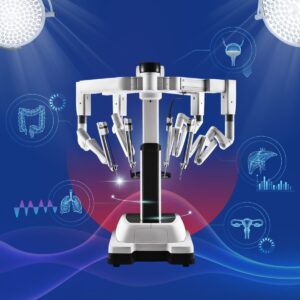From a survey in Thailand in 2004 among Thai men nationwide, aged 40 – 70 years, with a sample size of 1,250, it was found that 43 percent of Thai men experienced symptoms of erectile dysfunction, ranging from occasional unsuccessful intercourse to complete inability to perform sexually. In contrast, a survey in the United States reported a rate of 52 percent and it is estimated that the number of men with erectile dysfunction will increase to 170 million by 2025. Therefore, erectile dysfunction is an issue that should not be overlooked.
Understanding Men’s Health Issues
Erectile dysfunction refers to the scenario where the male genitalia cannot become firm and/or stay firm long enough to complete sexual intercourse satisfactorily on a regular or continuous basis. Understanding the mechanisms of erection is crucial for diagnosing the cause of erectile dysfunction and how to treat it.
The mechanisms of erection involve 3 pathways, including:
- Nocturnal Erection During sleep, an erection occurs about 4 – 6 times a night, lasting 15 – 30 minutes each time.
- Psychogenic Erection Triggered by sexual desire from various stimuli, commands are sent from the brain to the area called the paraventricular nucleus in the hypothalamus. Then, the commands travel down the spinal cord to the erection center located at the base of the spinal cord and through the cavernous nerve, stimulating the expansion of blood vessels in the genitalia, leading to an erection.
- Reflexogenic Erection Stimulation or touch of the genital area sends signals through the dorsal nerve to the erection center at the base of the spinal cord and then back to the genitalia (Cavernous Nerve).
The genitalia consists of 3 cylinders, and an erection requires the two main cylinders called the corpora cavernosa, which are comprised of sponge-like muscle tissue (Sinusoids) – these are essentially the fine blood vessels of the genitalia.
For an erection to occur upon sexual stimulation, it is essential to stimulate the part of the brain called Paraventricular Nucleus (PVN) in the area called Hypothalamus. This is known as Psychogenic Erection, where most of the nerves stimulated are type 2 Dopamine Receptors. Then, the commands travel down the spinal cord to the area around the base of the spine at levels 2 – 4, forming a neural cluster called Sacral Plexus, and branching into Cavernous Nerve to the genitalia, allowing the blood vessels that resemble a sponge to fully expand, pressing the veins that allow blood to flow out from the genitalia, thus resulting in a full erection.
The Causes of Dysfunction
Any malfunction in the mechanisms can result in erectile dysfunction, including:
- Failure to Initiate caused by psychological, neural, and hormonal issues.
- Failure to Fill due to arterial dysfunction.
- Failure to Store due to venous leak problems.
Studies have found that physical causes (Organic), psychological causes (Psychogenic), and a combination of both (Mixed ED) account for 70%, 11%, and 18% respectively. Physical causes often result from chronic diseases such as Diabetes, Atherosclerosis due to aging or high cholesterol, Cardiovascular Disease, spinal cord injuries, pelvic surgery, radiation therapy, prostate surgery, and Multiple Sclerosis, to name a few. Other risk factors include heavy alcohol consumption, smoking, and various medications.
Do Not Neglect Treatment
In the past, treatments began with the use of vacuum pumps to draw blood into the genitalia, followed by placing a rubber band at its base. However, this method was not popular due to the unnatural feeling and inconvenience it caused during ejaculation. Subsequently, surgery was used to insert artificial rods into the genitalia, progressing to the current models that involve a hidden pump in the lower abdomen. Medications injected directly into the genitalia were introduced a decade ago with great success, but due to the pain associated with self-injection, this method also became unpopular. Treatment evolved to medication inserted into the urethra, which still occasionally results in pain similar to that from injections.
The treatment of erectile dysfunction became widely recognized with the discovery of a simple and effective method: oral intake of medication from the group of Phosphodiesterase-5 (PDE-5 inhibitor) inhibitors. Because nerve stimulation in the genitalia releases “nitric oxide,” which stimulates the production of cyclic GMP (cGMP), a substance that causes the smooth muscle Sinusoid in the genitalia to relax, achieving an erection. However, cGMP is destroyed by the enzyme PDE-5. Therefore, taking PDE-5 inhibitors aids in improving the erection by countering cGMP destruction. These drugs include Sildenafil and others being researched like Tadalafil and Vardenafil. They are taken about 1 hour before sexual activity; side effects are similar across this class, such as headaches and flushing in about 10 – 15% of users due to vasodilation, but these effects are mild and temporary.
However, it is crucial not to use PDE-5 inhibitors in patients taking any form of nitrate medication like isosorbide or ISMO, and all forms of nitroglycerin, used by patients with coronary artery disease, as it greatly increases the levels of nitric oxide in the bloodstream, causing blood vessels to expand and potentially leading to a dangerous drop in blood pressure. Therefore, patients in this category should not use PDE-5 inhibitors.
Choosing the Appropriate Treatment
Currently, doctors explain each treatment’s pros and cons, allowing patients to decide their preferred method. Most patients choose a straightforward, affordable method without usage restrictions, typically starting with oral or sublingual medication. If ineffective, they may try other methods, such as medication inserted into the urethra or vacuum pumps, and conduct simple blood tests to check for diabetes, cholesterol levels, and liver and kidney function, which could affect medication dosage.
For those who do not respond to simple methods, the next step involves injecting medication into the base of the genitalia to test blood vessel condition and response to injection. Those who find it effective and are not averse to self-injection may choose this method. However, for those who do not respond well or dislike injections, surgery to insert an artificial genitalia shaft might be considered. Surgery to correct constricted blood vessels may be suited for younger individuals without diabetes requiring injections, resulting from trauma. However, any treatment following ineffective simple methods will require specialized examinations based on the chosen treatment method.
Not all patients with erectile dysfunction need treatment. If the patient and their partner are not bothered by the inability to have sexual intercourse, treatment might not be necessary. Yet, erectile dysfunction can indicate diabetes, high blood pressure, high cholesterol, and other risk factors. Therefore, even if sexual activity is not desired, health check-ups are recommended.














